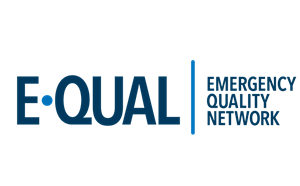
Qualified Clinical Data Registries
Our team has recently published good news for qualified clinical data registries (QCDRs) users. QCDR users had significantly greater overall quality measure scores and resultant payment adjustments compared to non-users.
By way of background, emergency clinicians primarily report performance on quality measures to the Centers for Medicare & Medicaid Services (CMS) through the traditional claims-based quality measures available within the Merit-based Incentive Payment System (MIPS). Serving as an alternative quality measure reporting strategy, medical specialty societies, health care data companies, and collaborating clinicians have developed CMS-approved QCDRs housing both traditional MIPS quality measures and specialty-specific quality measures.
In our work, the benefit to emergency clinicians was the most prominent out of the 12 specialties that commonly used QCDRs. Experts predicted emergency medicine clinicians to have an overall MIPS performance score of 86.37 if reporting at least 1 QCDR quality measure, compared to a MIPS performance score of 73.99 if not reporting any QCDR quality measures. On a related note, an emergency clinician’s payment adjustment was expected to be +1.26% if reporting at least 1 QCDR quality measure, compared to a +0.86% payment adjustment if not. This can have substantial financial ramifications depending on clinician group size, infrastructure, and financial and time demands.
However, the quality measure landscaping is changing, given significant concerns with the MIPS program. Particularly, CMS is rapidly raising the bar for performance thresholds of quality measures. The previously listed estimates are based on 2018 performance year scores (the most recent available at the time of analysis), which relied on clinicians to achieve an overall MIPS performance score of 15 during the performance year to avoid a negative payment adjustment. During the 2022 performance year, clinicians must achieve an overall MIPS performance score of 75 to avoid a negative payment adjustment. With the MIPS program being a budget-neutral program, it stands to reason that the size of positive bonuses may increase during coming performance years as fewer clinicians across all specialties can achieve the performance threshold. The enhanced infrastructure and evidenced benefit of QCDRs may be one option for clinicians to position themselves well as quality measure stringency increases.
Separately, the quality measure landscape is also changing in that CMS plans to sunset the traditional MIPS program in the coming 5-6 years. In its place, CMS has developed the MIPS Value Pathways (MVP) framework to facilitate and enhance the linkage between quality and cost. The aim is for clinicians to consider reporting on a uniform set of specialty-specific quality measures to get MIPS credit. With significant feedback from emergency clinicians, we recently also developed the ‘Adopting Best Practices and Promoting Patient Safety Within Emergency Medicine’ MVP, which CMS approved as 1 of only 7 MVPs included in the 2022 Physician Fee Schedule Final Rule. Currently, quality measures within the EM-specific MVP address bread-and-better undifferentiated high-risk chief complaints that exhibit substantial testing and disposition practice variability: abdominal pain, chest pain, back pain, headache. Participation in the MVP will initially be voluntary, with the first reporting performance year being 2023. Quality measures within the MVP are anticipated to undergo iterative maintenance as new relevant quality measures are developed and tested, with particular attention needed to address the shortage of cost measures associated with emergency care.
Consider using a QCDR for quality measure reporting to put yourself (and your group) in a better position to avoid financial penalties.
Author(s)

Cameron Gettel
MD MBA MHS
 American College of Emergency Physicians
American College of Emergency Physicians

